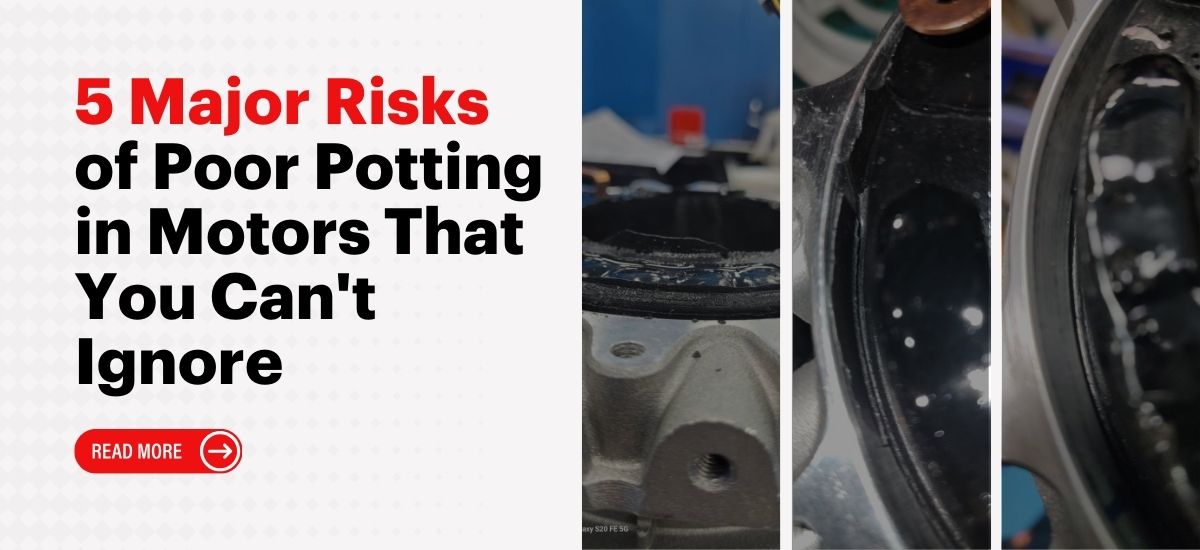Poor potting in motors can lead to several critical issues that affect their performance, reliability, and longevity.
Several issues of malfunctioning or failure in motors can often be traced back to the root cause of poor-quality potting. This critical factor is not widely recognized, leading to increased risks of rejections, loss of reputation, and in worst cases, blacklisting and penalties from customers. Understanding and addressing the importance of proper potting can mitigate these risks and ensure the reliable performance of motors.
Electrical failures leading to costly repairs
One of the primary purposes of potting is to insulate and protect the motor’s windings and components from electrical faults. Poor potting can result in incomplete coverage or the presence of air bubbles and voids, which can lead to short circuits, partial discharges, and breakdowns in dielectric strength. These electrical failures can cause motor malfunctions or even complete failure, leading to costly repairs or replacements.
Thermal management issues reducing efficiency
Effective thermal management is crucial for maintaining optimal motor performance. Poor potting can hinder heat dissipation, causing hot spots and uneven temperature distribution. This can lead to overheating, which degrades insulation materials, reduces efficiency, and shortens the motor’s lifespan. Overheating can also cause irreversible damage to the motor windings and other critical components.
Mechanical instability causing premature failure
Motors are often exposed to vibrations and mechanical shocks during operation. Inadequate potting fails to provide the necessary mechanical support and protection, resulting in increased susceptibility to vibrations and impacts. This can cause physical damage to the windings and connections, leading to mechanical failures and reduced operational stability.
Environmental contamination affects reliability
One of the essential functions of potting is to protect the motor components from environmental contaminants such as moisture, dust, and chemicals. Poor potting leaves gaps and cracks through which these contaminants can infiltrate, leading to corrosion, moisture ingress, and chemical damage. Such contamination can significantly impair the motor’s functionality and reliability.
Decreased life and performance of motors
Overall, poor potting compromises the motor’s structural integrity and protective capabilities. This results in a higher likelihood of component failures, increased maintenance requirements, and reduced operational lifespan. The lack of adequate protection means the motor is more prone to various forms of degradation, ultimately leading to decreased reliability and higher long-term costs for maintenance and replacement.
Get 100% Accurate, and Void Free Potting with Twin
Understanding these risks underscores the importance of quality potting in motor applications. Twin Engineers specializes in advanced vacuum potting solutions designed to mitigate these risks, ensuring superior performance, reliability, and longevity for your motors. By talking to our team of experts about high-quality vacuum potting techniques, you can protect your motors from the detrimental effects of poor potting and achieve optimal operational efficiency.
Get in touch with us at mktg@twinengineers.com to schedule an appointment.

